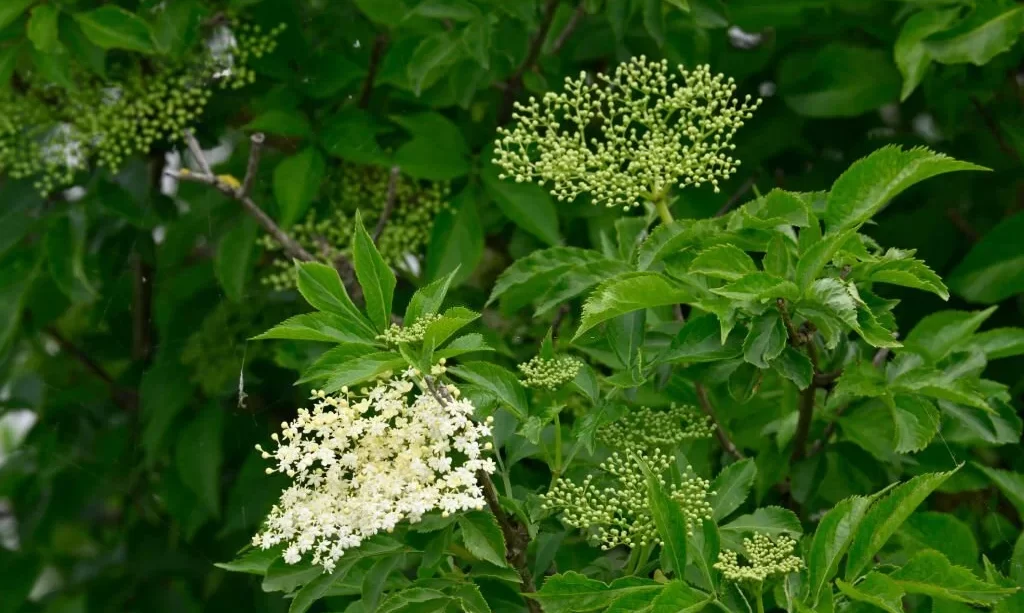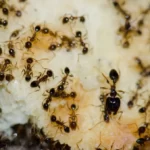Elderflowers, those delicate and fragrant blossoms from the elderberry tree, have long been a favorite in the world of culinary delights. Their enchanting aroma and unique flavor make them a sought-after ingredient in various dishes and beverages. But what exactly do elderflowers taste like, and where do they come from?
In this article, we will take a journey through the world of elderflowers, starting with the basics and delving into their captivating taste profile. Whether you’re a seasoned cook or simply curious about these blooms, read on to discover the essence of elderflowers and how they can elevate your culinary experiences.
- 6-8 ft. tall and wide at maturity
- Partial to full sun (4+ hours) required
- Hardy in zones 4-7, be sure to check your USDA zone to ensure success
- Quart shrubs are 5-8 in. tall and 6 months to 1-year old at shipment, varies by season and plant
The Basics of Elderflowers
Elderflowers, scientifically known as Sambucus nigra, are the blossoms of the elderberry tree, a common sight in many parts of the world. These small, creamy-white flowers typically bloom in late spring to early summer, creating a visually striking contrast against the tree’s dark green leaves. Elderflower clusters are characterized by their dainty, star-shaped blooms and a sweet, floral scent that can be detected from a distance.
These flowers have been a part of culinary traditions for centuries. They grow on elderberry trees, which are known for their berry-bearing abilities as well. However, it’s the elderflowers that we’re focusing on in this article.
Elderflowers are renowned for their captivating aroma, often described as a blend of honey, citrus, and lychee. This aromatic quality is a prelude to their delicate and subtly sweet taste, making them a prized ingredient in various recipes and preparations.
As we delve deeper into this article, we’ll explore not only what elderflowers taste like but also how their unique flavor profile can be harnessed in cooking, baking, and beverages. Whether you’re a food enthusiast or simply intrigued by the wonders of nature’s flavors, elderflowers have much to offer. So, let’s continue our journey to uncover the essence of these delightful blossoms.
The Aroma of Elderflowers
Close your eyes and imagine a gentle breeze carrying the scent of elderflowers through the air. It’s a fragrance that can transport you to a world of tranquility and sweetness. The aroma of elderflowers is truly enchanting.
Elderflowers release a perfume that’s often described as a harmonious blend of honey, citrus, and lychee. This captivating scent is the first thing you’ll notice when you encounter elderflowers in the wild or as an ingredient in a recipe. It’s a scent that beckons you to explore further and discover the delights hidden within these blossoms.
The floral aroma of elderflowers is not overpowering but rather delicate and inviting. It has a freshness that can brighten up any dish or beverage it touches. This aromatic quality is one of the reasons why elderflowers are so highly prized in the culinary world, and it’s a prelude to the fascinating taste that we’ll delve into in the next section.
The Flavor Profile
Now that we’ve been introduced to the alluring aroma of elderflowers, let’s unravel the mystery of their taste. Elderflowers offer a flavor profile that’s as unique as their fragrance, and it’s a flavor that has the power to surprise and delight.
Elderflowers have a delicate, subtly sweet taste with floral undertones. Imagine a gentle kiss of sweetness, reminiscent of pear or lychee, followed by a subtle hint of citrusy notes, similar to lemon or grapefruit. This combination of flavors creates a refreshing and well-balanced taste that can be both soothing and invigorating.
The sweetness of elderflowers is not overwhelming, making them versatile in a wide range of culinary applications. They add a touch of natural sweetness without dominating the overall taste of a dish or drink. This versatility is what makes elderflowers such a beloved ingredient in cooking, baking, and mixology.
As we continue our exploration, we’ll delve into how this unique flavor profile can be used to create delectable dishes, beverages, and more. Whether you’re a chef looking to experiment or simply someone with a curious palate, elderflowers offer a taste experience like no other. So, let’s embark on this flavorful journey together.
Culinary Uses
Elderflowers aren’t just a feast for the senses; they also shine in the kitchen. Their subtle sweetness and enchanting aroma make them a sought-after ingredient in various culinary creations. Here, we’ll explore some of the exciting ways elderflowers are used in the culinary world.
- Beverages: Elderflower cordial, a sweet and aromatic syrup, is a classic use of elderflowers. It’s mixed with water to create a refreshing elderflower drink or added to cocktails for a floral twist. Elderflower tea is another soothing option.
- Desserts: Elderflowers can elevate desserts. You’ll find them in elderflower-infused ice creams, sorbets, and even elderflower jelly. They add a delicate sweetness that pairs beautifully with fruits like strawberries.
- Baking: Bakers incorporate elderflowers into cakes, muffins, and pastries for a unique flavor. Elderflower-infused sugar or honey can be used to sweeten baked goods.
- Jams and Preserves: Elderflowers add a fragrant touch to homemade jams and preserves, turning ordinary spreads into something extraordinary.
- Sauces and Dressings: In savory dishes, elderflower can be used to create sauces or dressings that pair well with poultry or fish.
- Fever Tree Elderflower Tonic Water, 4 Packs, 27.2 Fluid Ounces (Pack Of 6)
Health Benefits
Beyond their culinary charm, elderflowers have been used for their potential health benefits in traditional medicine for centuries. While more research is needed, here are some of the health claims associated with elderflowers:
- Immune Support: Elderflowers are believed to have immune-boosting properties due to their antioxidant content, which may help protect cells from damage.
- Cold and Flu Relief: Elderflower-based remedies, like elderberry syrup, are used to alleviate cold and flu symptoms. They may reduce the duration and severity of illnesses.
- Anti-Inflammatory: Elderflowers may have anti-inflammatory properties, which could be helpful for conditions like arthritis.
- Digestive Aid: Some people use elderflowers to aid digestion and relieve digestive discomfort.
It’s essential to note that while elderflowers offer potential health benefits, they should be consumed in moderation and not as a substitute for professional medical advice or treatments.
Conclusion
In conclusion, elderflowers are a delightful addition to both the culinary and health worlds. Their enchanting aroma, subtle sweetness, and unique flavor profile make them a standout ingredient in various dishes and beverages. From elderflower-infused cocktails to soothing teas, elderflowers have a versatile role in the kitchen.
Moreover, the potential health benefits associated with elderflowers, particularly in traditional medicine, add to their allure. While they are not a miracle cure, their antioxidant properties and historical use for immune support and relief from cold and flu symptoms make them a fascinating subject of study.
Whether you’re a food enthusiast eager to experiment with new flavors or someone seeking natural remedies, elderflowers have something to offer. So, don’t hesitate to explore the world of elderflowers and discover the magic they bring to your palate and well-being.







